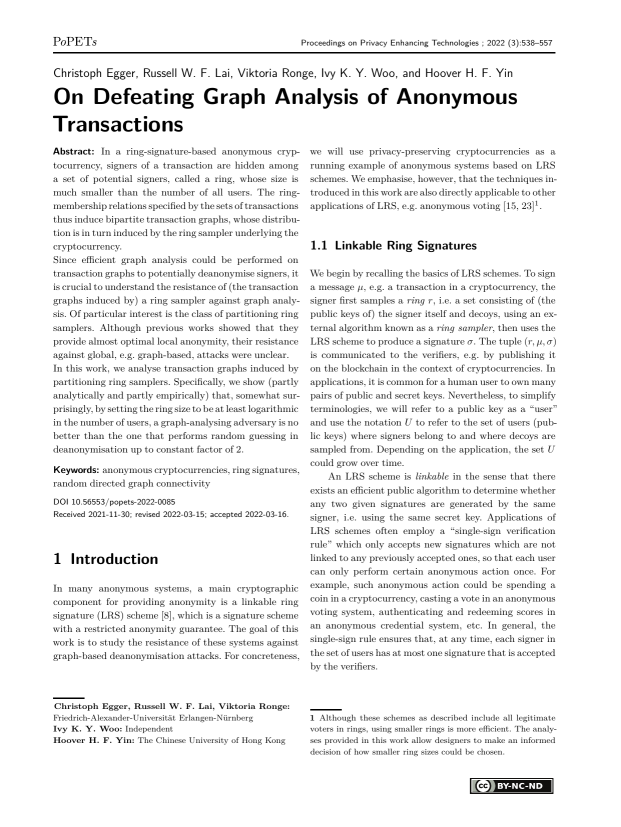On Defeating Graph Analysis of Anonymous Transactions
Authors: Christoph Egger (Friedrich-Alexander-Universität Erlangen-Nürnberg), Russell W. F. Lai (Friedrich-Alexander-Universität Erlangen-Nürnberg), Viktoria Ronge (Friedrich-Alexander-Universität Erlangen-Nürnberg), Ivy K. Y. Woo (Independent), Hoover H. F. Yin (The Chinese University of Hong Kong)
Volume: 2022
Issue: 3
Pages: 538–557
DOI: https://doi.org/10.56553/popets-2022-0085
Abstract: In a ring-signature-based anonymous cryptocurrency, signers of a transaction are hidden among a set of potential signers, called a ring, whose size is much smaller than the number of all users. The ringmembership relations specified by the sets of transactions thus induce bipartite transaction graphs, whose distribution is in turn induced by the ring sampler underlying the cryptocurrency. Since efficient graph analysis could be performed on transaction graphs to potentially deanonymise signers, it is crucial to understand the resistance of (the transaction graphs induced by) a ring sampler against graph analysis. Of particular interest is the class of partitioning ring samplers. Although previous works showed that they provide almost optimal local anonymity, their resistance against global, e.g. graph-based, attacks were unclear. In this work, we analyse transaction graphs induced by partitioning ring samplers. Specifically, we show (partly analytically and partly empirically) that, somewhat surprisingly, by setting the ring size to be at least logarithmic in the number of users, a graph-analysing adversary is no better than the one that performs random guessing in deanonymisation up to constant factor of 2.
Keywords: anonymous cryptocurrencies, ring signatures, random directed graph connectivity
Copyright in PoPETs articles are held by their authors. This article is published under a Creative Commons Attribution-NonCommercial-NoDerivs 3.0 license.


